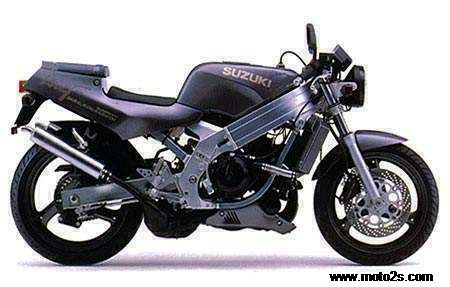Suzuki RG 250TV Wolf
The RGV250 ruled the 250cc two-stroke race-replica roost for most of the 1990s. First produced to replace the RG250 in 1989, the first RGV250, the K model, was an incredibly high-spec machine. A 90" V-twin two-stroke engine produced an amazing 48kW (65bhp), which was enough to make the featherweight RGV more exciting than most bikes two or even three times its capacity.
Perhaps the most interesting model is the 1991 M model. The Grands Prix styling was extended to every part of the bike, from the fully-adjustable upside-down front forks to the rear banana-style swingarm and twin-exit silencers on the right hand side. The full race fairing has swooping, aerodynamic lines, while the minimalist seat pad and low clip-on bars put the rider into an aggressive racing crouch. The engine and chassis both bristle with state-of-the-art technology. A computerized power-valve system alters the engine's exhaust characteristics to suit different revs, while electronic solenoids in the flat-slide carbs further refine fuelling, giving optimum performance.
The four-piston front calipers and fully floating discs are almost too much for the RGV's 139kg (3061b) mass. Safe, powerful stopping is easily achieved with just one or two fingers of lever pressure. Wide, sticky radial tyres give the little Suzuki maximum grip on road or track. It is on the track that the RGV250 is most rewarding. Extreme acceleration, braking and lean angles are practically compulsory, and the RGV has won more than its fair share of clubman race championships. The highly tuned engine is tricky to tune reliably, however; many race engines are unreliable and need expensive maintenance.
Later models, from 1997 onwards, use a revised, narrow angle 70° engine with ram-air intakes, electric start and a dry clutch. These were only sold in Japan, but appeared in several other markets via unofficial grey importers. |


